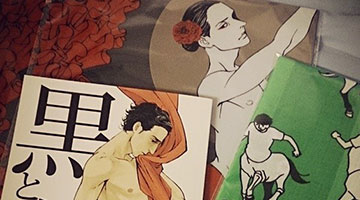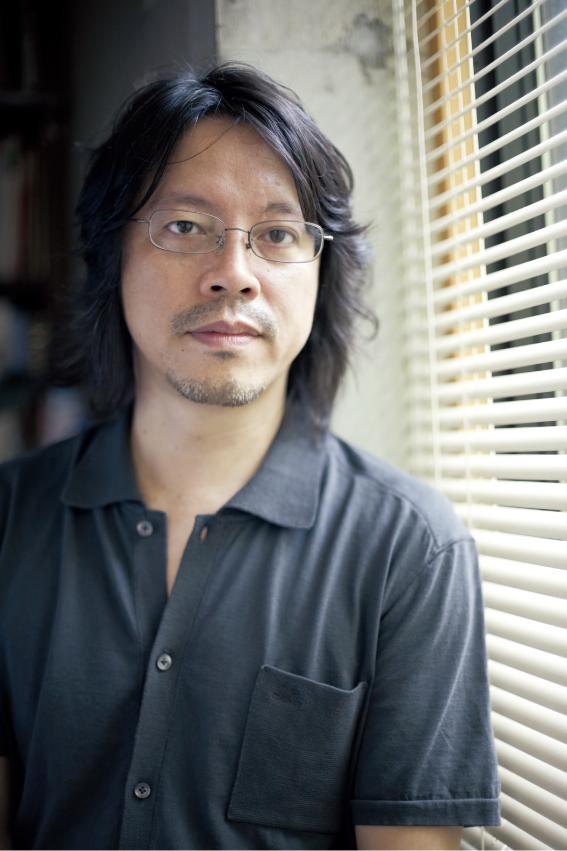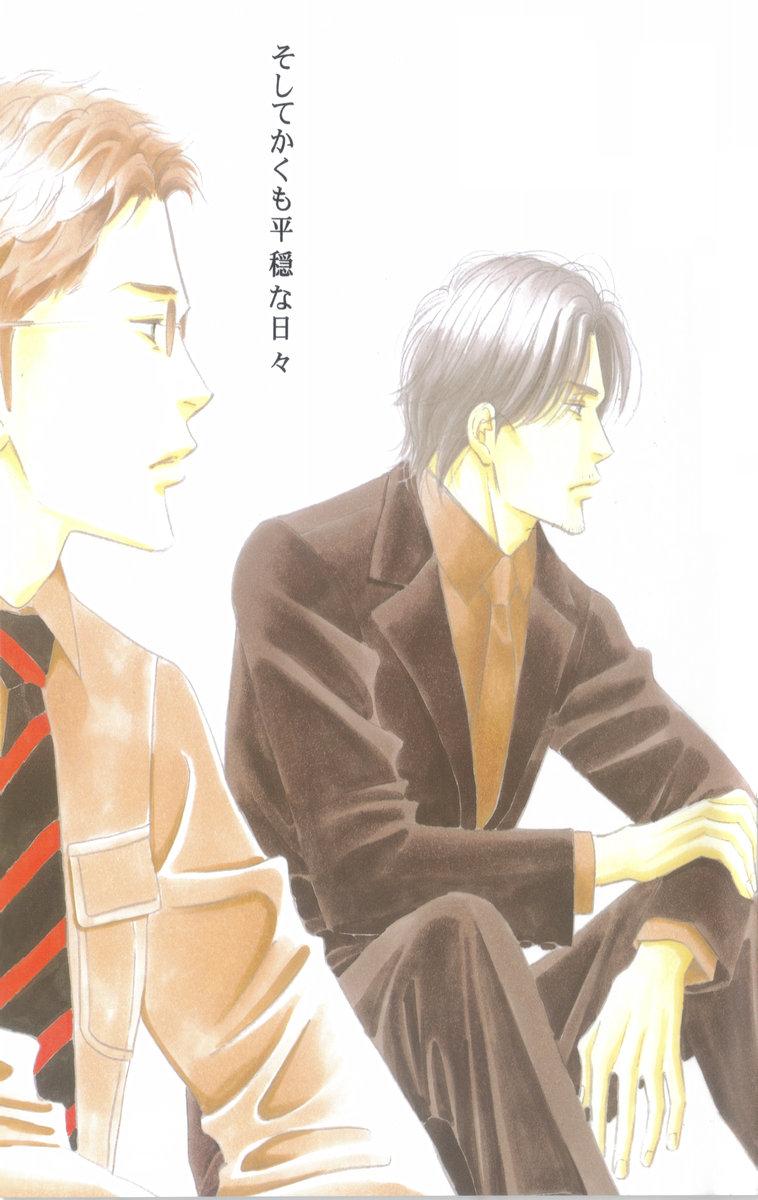Just where did January and February go?!
I promised myself in my last spotlight that I will make a point in writing 12 spotlights for this year, but here I am in March writing my first spotlight! Que horror!
That said, starting the spotlight again is a lot better than not ever continuing it at all! I’ve really loved writing and sharing why I love a particular author (or series) and hear why people love them as well. More than that, March is a special month for me. It’s only in March where I get to be a little more selfish about my tastes.
I’ve decided that March is the month where I get to write authors that have driven me crazy or have puzzled me entirely. Last year, it was Nakamura Asumiko’s mesmerizing eyes. This year, it is the mystery of Yamashita Tomoko — a rising star in manga who is both amazing and cruel.
Just who is Yamashita Tomoko?

I wish I can tell you easily but I find it difficult to encapsulate all my thoughts and feelings for her. -3-)
The basics go that she was born in 1981. Taurus. Blood type: B. She had a doujin group named noneCo that once published One Piece Sanji and Zoro doujins. Isn’t interesting how these authors seem to get their start in Shounen Jump doujinshi? 😀
To me, I find Yamashita Tomoko similar to Sherlock’s Irene Adler. It’s too easy to presume who she is but when her work’s laid out bare in front of you, but you just can’t seem to figure her out in the end. She and her works are a puzzle to me, the nice intriguing kind. Page after page she unravels the complexities of her characters’ relationships and more often than not, I feel arrested, struggling to put my feelings in order, longing for her next works. It’s a strange experience and all the more I am enamored to solve her puzzles.
Perhaps I can start where we can possibly know her. In the English reading world, Yamashita Tomoko has two titles: Dining Bar Akira and Black Winged Love, both published under netcomics. She personally caught my attention for Dining Bar Akira as I am always in want of food in my porn.
Dining Bar Akira was quite exceptional for a BL manga. It did win in the BL category “Kono Manga wa Sugoi!” award. ((Trans. This Manga is Amazing!)) What I loved about it was unlike most BL manga that loves to build towards the love confession, Yamashita presents to us a story of how one adult straight as an arrow guy can react to a confession… from a younger man at that. Like Akira, you process through the shock of receiving such love both unknown, unusual, and irresistible.
Love from knotted fringes

Her early works were mostly BL stories. Many of them are shorts of a couple who are struggling to define their relationship, or friends where one guy ends up falling for another. What I enjoy about these stories is they are strong vignettes of how we all deal with love. It isn’t just about kissing or the schmex ((although the schmex is important for us fujoshi!)). It can be outrageous and flamboyant. It can also be quiet and natural. More than the circumstance, it’s all about these emotions that have been buried for a while and refuses to disappear.
What I find beautiful is rather than giving us long narratives of her characters’ affairs, she shows us the intricate complex knot of relationships, the tightly wound threads of her character’s emotions and how they unfurl to make a beautiful weave. She weaves these emotions into intricate relationships — some of them funny such as this straightforward no-fuss guy who falls in love with a narcisstic idiot in Yes it’s Me, some of them difficult and painful such as those in Black Winged Love and Illumination. She presents us with her characters already at the fringes of their emotions, waiting to burst and explode either in anger, love, or insanity. Not a lot of authors can do this well. At times authors trap us in these kinds of tales but Yamashita Tomoko’s stories flow well enough for us to enjoy what she has to say.
Expect the unexpected
It’s hard to put Yamashita Tomoko in a writing stereotype. You can expect CJ Michalski to do shota. Naono Bohra for ossan ukes. Est Em with her muscly romantic European men. Basso with her Italian politicians. I can’t say the same for Yamashita. She’s generally tackled college-age to middle-aged men but they’re all very different. No character is similar to another although I have some friends who find it difficult to distinguish one character from another.
That said, her art style is similar to Suzuki Tsuta but unlike Tsuta who has a more general appeal in terms of art style, Yamashita’s far more graceful and wispy. There’s an a particular emptiness in her work, a white space skillfully placed to allow emotions to build and focus on how her characters faces change. She uses thin lines to map the face but intense strokes to those emotional eyes. Every space is filled with meaning that when you expect things to turn uphill, Yamashita turns her story around, making us wonder if our lives will be fulfilled with happy endings.

I can sense that like most BL authors, Yamashita is a romantic. But her romance doesn’t lie in the fujoshi world of fantasy where everything can possibly be happy and sparkly. Well, Koi no Hanashi ga Shitai is a prime example of her cheesiest romance — even then she manages to balance her tales with a happiness born from trusting. In Yes It’s Me, it’s the unexpected selfish love turning selfless. I love this unique, creative, at times straight-forward, organic, almost masochistic approach to love. We may not have the chance to be happy but we can try. Stupid as we may look. Painful as it can be.
I think with this I can say that this makes her work different compared to the rest. She’s not so much a light-hearted comedienne of a mangaka nor are her works in anyway depressing. She’s right in the middle of the battlefield, struggling for a fun yet deep story to read. When most of her contemporaries beat the hearts of fujoshi with passionate and fervent romances filled with schmex, Yamashita douses our fujoshi fervor with water and makes us focus on what else is important. She’s the kind that kindles a fire to a comfortable warmth. And that’s nice really… at least for a jaded cynic fujoshi like me. Sometimes it infuriates me though, because I didn’t get what I expected. I think it’s safe to say now that for a BL mangaka, she doesn’t draw a lot of sex. It really doesn’t matter though.
But more than BL…
She is a fantastic josei writer. This came as a surprise.
I really hadn’t known that she was writing josei until I saw her nominated for a Taishou in 2011. I wavered to get a copy of Don’t Cry Girl only to find myself in Kinokuniya New York, looking at a copy of Her with the word “Winner of 2011 This Manga is Awesome Award” emblazoned on its obi. Not again. With limited luggage space, I was thinking, is it worth it finally getting her josei title? How could she be so much in people’s radar that as soon as she directed her energies towards josei, critics are clamoring for her? I often don’t bite into BL cum josei manga artists but this was Yamashita Tomoko. She must be doing something entirely different.
See, the problem with some BL mangaka who switch to josei is that sometimes, the BL doesn’t disappear. The sight of two men in the story immediately sends fujoshi waves crazy even if they are just friends. It’s insane but whoever said fujoshi were not insane? Even when Est Em, Nakamura Asumiko or Natsume Ono started writing for seinen magazines, I still find myself pairing their characters like crazy. Fujoshi magic may be at work and yet somehow… I can’t say the same for Yamashita Tomoko’s works. Then again, her josei work really focused on women.
Love Hate Love‘s a story about a ballerina who’s ambivalent about her future. While she believes that her family is on to her for being quite unfulfilled as a ballerina, she aspires to be outside of her career. And even then, she doesn’t see her life without ballet. While some would find her dependence with her mail neighbor anti-feminist, I think it’s nice that their exchanges had made her realize what she truly loved and what she really hated. It was an honest story, filled with the same emotional balance and tumbles as her BL.

That said, Don’t Cry Girl was a different affair. I was expecting a heart wrenching affair because of its cover however it turned to be a totally hilarious story of a girl who was doing her best not to cry as she freeloaded with a nudist. It’s a crazy romantic comedy that is definitely one of her best works, perhaps in the same capacity as Dining Bar Akira. I think the charm lies in Masuda. Then again, I love crazy old men.
And then there was Her, the story of six ladies and their struggles to keep their relationships or their lives in check. Usually, Yamashita divides her stories however, upon reading this as a volume, I love how the stories leap off from another, as if one is interconnected with the other even to the minutest degree. The volume is not just love stories though. It’s closer to personal relationships, a small act, an impression, perhaps an exchange that can change our perspective in life. For me, I felt that Her captures Yamashita’s spirit as an author — graceful, reflective, and at times hilarious. Her makes me understand how the littlest of things, sudden or tangential as they may appear can be very important. And particularly in this case, how it’s amazing and all right to be a woman.
Postscript
At the end of every volume, Yamashita writes a postcript about her inspiration in writing her manga. It’s a lovely insight to her thoughts while writing it, but what I appreciate more is how she writes what music she listens to while writing her manga. When I found out that she has background music for her chapters, I listened to some of them and realized how it totally changes the mood of that chapter. Hopefully, when her works get to print, these postscripts will be published as well. I think this was really helpful for her seinen title, Butter, a running story in Afternoon about a high school dance club. When they do slow step and tango, listening to the right tunes give life to her panels.
At the end of all this, have I figured her out? Did I uncover the mystery of Yamashita Tomoko? I don’t think I have and I don’t think I want to either. I’m perfectly fine with that. I believe the fun part of Yamashita Tomoko is how she has the capacity to surprise me when I read her works. Definitely she’s part of this new wave of BL mangaka who are changing the face not only of the BL genre but of manga for adults. When I look at her art and her style, I see serious, if not forlorn faces of people, only to realize that they’re actually colorful, delightful characters. So I look forward to reading more of her works. I would like to see her break my expectations again and again.
BGM â—Š OK Go – A Million Ways
Reading List
In English:
These titles are available online and can be read worldwide via Net Comics!
- Dining Bar Akira
- Black Winged Love
In Japanese: (buy them via Amazon.co.jp)
Boys Love Titles: Touch Me Again, Koi no Hanashi ga Shiritai, Illumination, Yes It’s Me, Je’taime Cafe Noir, Bara no Hitomi wa Bakudan
Josei Titles (under Feel Young and Comic Zero): Love, Hate, Love, Mo’Some Sting, Don’t Cry Girl, Her, Mirror Ball Flashing Magic
Seinen Titles (under Afternoon): Butter, Satanic Sweet
Anthologies: On Blue (BL), Bokura no Manga (via IPad & Iphone), Nakeru BL






I love your review of Tomoko Tamashita, she’s one of my favorite mangaka,Â
Good news: JManga just released Don’t Cry, Girl in English! http://www.jmanga.com/dont-cry-girl/1Â
There’s another of hers coming soonish as well. I really enjoyed working on both of them.
Thanks for the article, she really is an amazingly versatile mangaka!
Yes! I found out about it yesterday and was totally stoked about it! By my impression does this mean that you’re either the translator or the letterer? 😀 I haven’t bought the Jmanga copy but I’ll update the links above!Â
Also… -w-) Any hints on what you are working on next? (I’d imagine Mo’some sting since that’s the next Libre title?)Â
Yes, I was the translator. And your guess is a reasonable deduction ;-). I actually finished both books already and am working on a different project by a different author. Hoping the next Yamashita book gets put up next week, doubt it’d be more than two weeks. I hope they do well, I’d love to work on more of her books, especially after reading your article!
By the way, did you read the one-shot story ’33 22′ in your Don’t Cry Girl jp volume? I really loved that one. A very different story, with almost entirely women characters, and a lot of subtlety and touching emotions. I hope you enjoy what we did with both of them!
That was a lovely story and I think a foretelling of the style that she will employ in her stories for Feel Young. It’s unapologetic when it comes to opening gender trivialities, but it isn’t harsh and quite subtle as you have put it. I just bought the book yesterday in JManga and I’m proud to say that you guys did a really good work in both Don’t Cry Girl and 33 22. <3 I look forward to your next work and hopefully they gave you guys credit for the work that you guys do.Â
 Aww thanks, I’m really glad you enjoyed it! The whole team really loved the book and working on it, and hope lots of people give it a chance.
P.S. I did translate the postscript for both books, if you needed any further incentive :-). (That must have been a bit of a pain for the letterer, since she overlaid the postscript over production sketches – fortunately we decided not to translate the sketch dialogue!)
The fact that it was translated was an incentive and needless to say, I love reading her postscripts so to see that translated is a plus for me. <3Â
Uhmm I like this article…
First, I don’t know this mangaka. I was attract by the main article pic so I read it. Your article gave me a nice impression about her. She seems good. Maybe I give it a try to read her works. Thanks for sharing.Â
You’re welcome and do try to read her works when you have the chance!Â
this spotlight article is wonderful. i am a huge fan of yamashita, and when i stare at the covers of her works that haven’t been translated, i become motivated and crack open my japanese lessons books.
i agree that she’s a pretty balanced author, creating moments that are hilarious, and some that make me reflect. her characters are complex, and i do like her older men. masuda is quite an interesting character hahaha.
you’re following her twitter right? i really love how it’s full of food, and she reminds me a bit of fumi yoshinaga. i think it’s cute that her and est em seem to be familiar with each other. i saw a cover of one of est em’s recent works that had a very yamashita-feeling to it.
i’d love to read her non-BL works and am very interested in her particularly.
Thank you so much for your comments! I’m glad that I managed to convey your feelings as well, as a fan! Balanced is an interesting way of encapsulating her works and while I read through her BL, I thought she was such an author. And then I read Don’t Cry Girl which was extremely hilarious but tasteful.Â
And yes! I do follow her twitter and she’s honestly hilarious! I believe they are good friends. I think the 2nd vol. of On Blue has an essay of Yamashita Tomoko and what she thinks about Est Em. Not sure if it was an essay or an interview. I think the two of them have the same tastes in terms of stories but they have different ways of executing it.Â
I do hope you do get to read her non-BL work because to me, they are no way near inferior compared to her BL!Â
Dining Bar Akira was outstanding. I love it when people can pull off complex, cranky characters. I would love to see more of her work translated.
The same goes for me. She’s a fantastic author and she deserves some loving.Â
Thanks for that spotlight, Khursten. I’m not familiar with her at all and this just gave me such an in-depth look at her storytelling style and approach. Now I’m excited to read her!
Her works are mostly BL. And the josei ones are in Japanese and I am dying to have them translated in English. I hope someone picks it up. ;w;Â